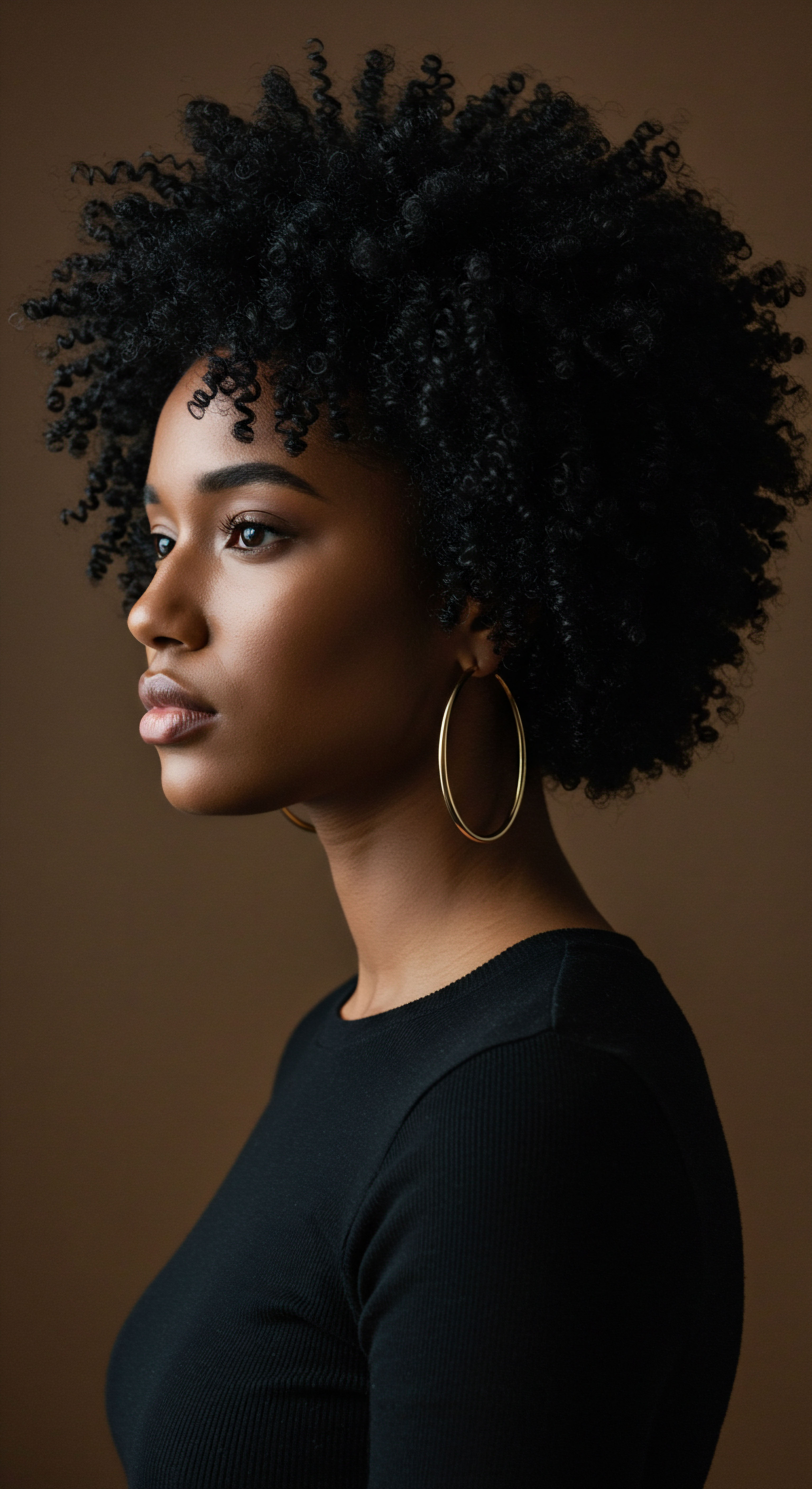
Roots
Hair, for Black communities across the globe, has always been more than mere adornment. It is a profound declaration, a living testament to heritage, identity, and spirit. From the earliest communal gatherings to the modern-day affirmation of self, the way Black hair is styled, tended, and worn holds layers of meaning, often speaking volumes without a single uttered word. This journey through time reveals how hair, with its unique textures and versatile forms, has consistently mirrored the changing currents of Black life, from ancient reverence to contemporary expressions of freedom.

Ancient Echoes and Sacred Strands
Long before the transatlantic slave trade reshaped continents and cultures, hair in African societies served as a powerful visual language. Across diverse ethnic groups, specific hairstyles conveyed intricate details about an individual’s life, standing, and affiliations. It was a dynamic medium for communication, revealing aspects such as a person’s age, marital status, tribal identity, occupation, or even their religious beliefs. For instance, the Yoruba people of Nigeria crafted elaborate hairstyles that signaled their community roles, while the Himba tribe in Namibia wore thick braids coated with red ochre paste, a symbolic connection to the earth and their ancestors.
The act of styling hair itself was often a communal and intimate experience, a time for sharing stories, wisdom, and strengthening social bonds. Mothers, sisters, and close friends would gather, their hands moving with practiced rhythm, transforming strands into intricate designs. This shared ritual reinforced kinship and transmitted cultural knowledge across generations. The spiritual significance of hair was equally deep; in many African cosmologies, hair was considered sacred, acting as a conduit for spiritual energy, connecting individuals to their ancestors and the divine.
Black hair has consistently functioned as a living archive of identity, culture, and resilience across centuries.
Beyond aesthetic appeal, these styles held practical purposes. They offered protection from the elements, and in some instances, even served as a means of survival. There is historical mention of enslaved individuals braiding seeds and rice into their hair, a quiet act of preserving sustenance and cultural memory during forced migration. This early period demonstrates that Black hair was not simply a biological attribute; it was a profound cultural marker, a source of pride, and a silent communicator of a person’s entire world.

Early Symbolic Meanings in African Societies
- Status ❉ Hair arrangements could denote social standing, wealth, or leadership roles within a community.
- Identity ❉ Specific styles often identified an individual’s tribal or ethnic group.
- Life Stages ❉ Hair could signify age, marital status, or even mark rites of passage, such as a young woman’s transition to adulthood.
- Spiritual Connection ❉ In some traditions, hair was believed to hold spiritual power, linking individuals to ancestors or deities.
| Region/Culture West Africa (Fulani) |
| Hair Practice Thin, plaited braids with beads and cowrie shells |
| Symbolic Meaning Heritage, marital status, wealth |
| Region/Culture Nigeria (Yoruba) |
| Hair Practice Elaborate styles like "Irun Kiko" (thread-wrapping) |
| Symbolic Meaning Femininity, marriage, community roles, spiritual energy |
| Region/Culture Namibia (Himba) |
| Hair Practice Thick braids coated with red ochre paste |
| Symbolic Meaning Connection to earth, ancestors, age |
| Region/Culture Congo (Pygmies) |
| Hair Practice Braids and spiral styles |
| Symbolic Meaning Distinction of social groups |
| Region/Culture Hair in ancient African societies was a complex system of nonverbal communication, revealing much about the wearer's place in the world. |

Ritual
As time flowed, and particularly with the onset of the transatlantic slave trade, the profound connection between Black people and their hair faced an unprecedented challenge. The forced removal from ancestral lands and the brutal conditions of enslavement brought about a deliberate stripping away of identity, a process that often began with the shaving of heads upon arrival in the Americas. This act was not merely about hygiene; it was a calculated attempt to erase cultural memory and sever the deep-seated connections to self and community that hair represented. Yet, even in the face of such profound dehumanization, the spirit of self-expression and cultural continuity persisted, finding new forms and deeper meanings within the daily rituals of hair care.
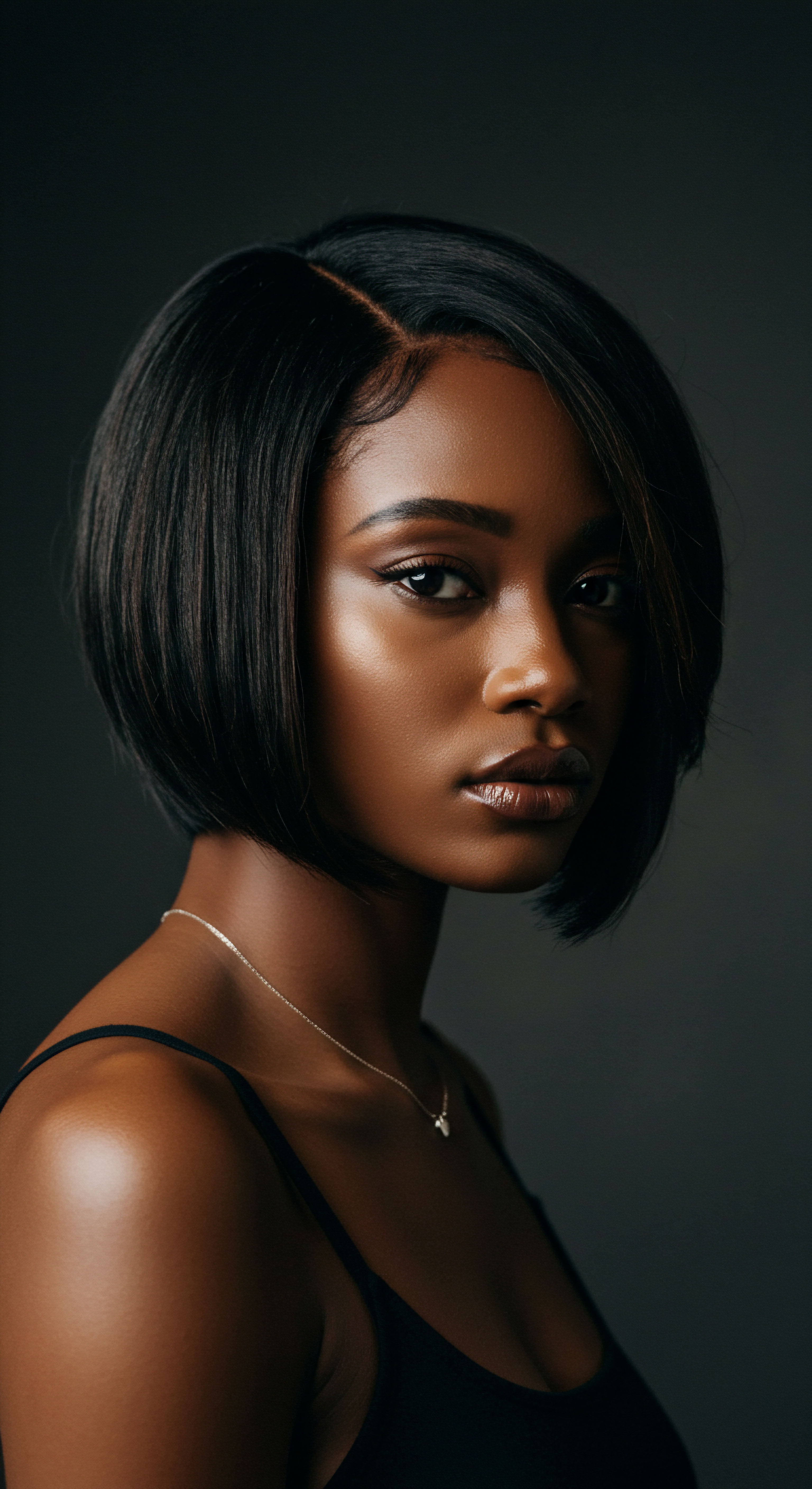
The Unyielding Spirit of Self-Expression
The systematic efforts to suppress African identity during slavery extended directly to hair. Enslaved people were often forced to cut or shave their hair, a measure designed to strip them of their cultural markers and promote anonymity. Despite this oppression, hair remained a powerful symbol of defiance and a secret language.
For instance, cornrows, a style originating in Africa, were ingeniously used by enslaved individuals to create maps for escape routes, or to hide seeds for planting, ensuring survival and a connection to their past. This clever adaptation transformed a personal adornment into a tool of resistance, a quiet act of rebellion against an oppressive system.
Post-slavery, the struggle for self-definition continued. In the 18th century, the Tignon Laws in Louisiana mandated that free Black women cover their elaborate hairstyles with a headscarf, a direct attempt to assert social hierarchy and diminish their perceived status. Yet, these women, with remarkable resilience, transformed the headscarf itself into a statement of style and defiance, adorning them with colorful fabrics and jewels. This act, while outwardly compliant, was an inner reclamation, a quiet yet powerful assertion of identity.
Hair rituals, born of necessity and defiance, became a powerful medium for preserving cultural heritage and communicating resilience.
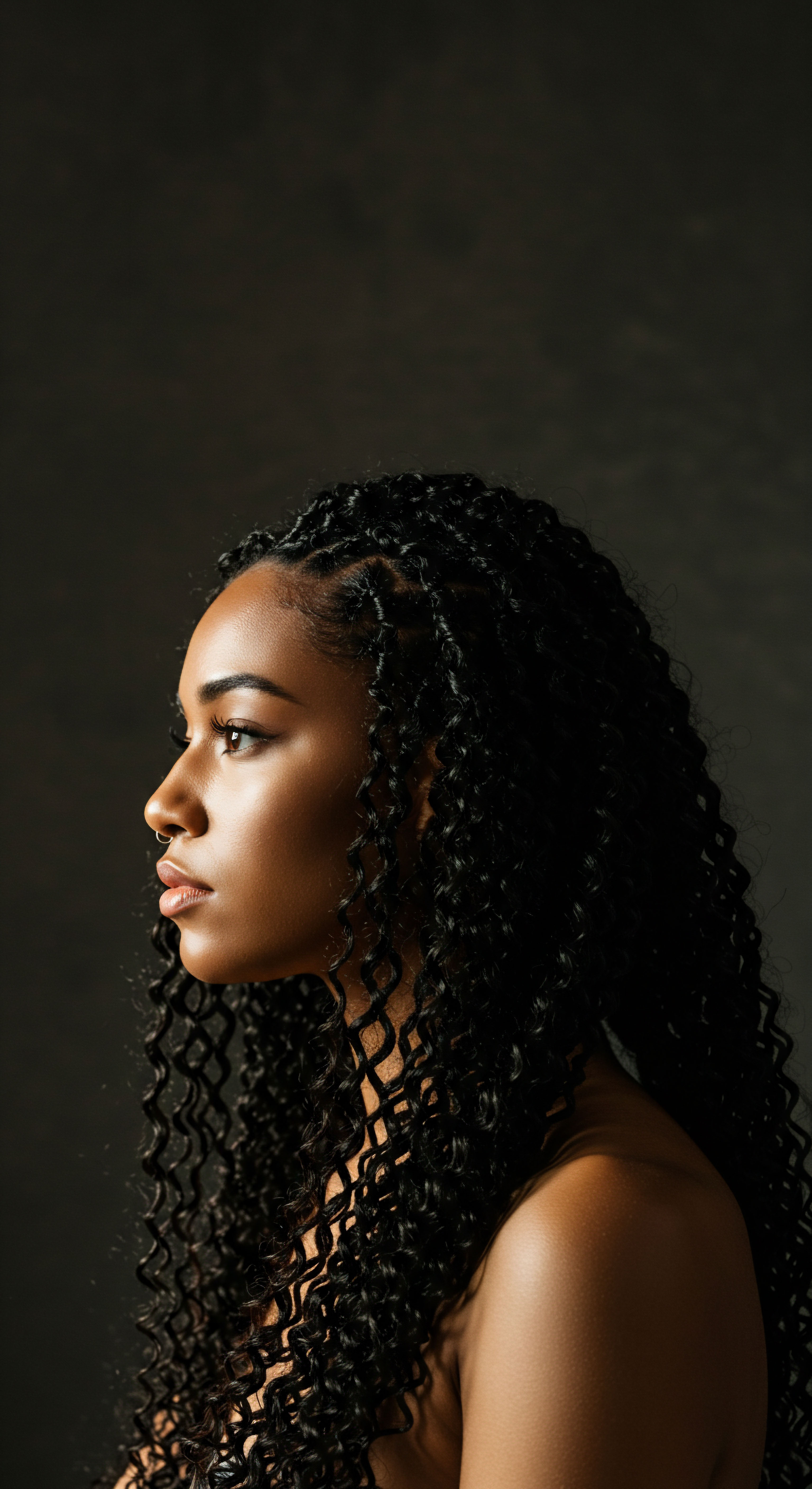
Shifting Landscapes and Changing Standards
The 19th and early 20th centuries witnessed a complex interplay of societal pressures and personal choices. With the dominant Eurocentric beauty standards permeating American society, many Black individuals, particularly women, began to alter their hair texture through chemical relaxers and hot combs. This practice was often driven by a desire for social and economic advancement, a means to reduce tension and assimilate into a society that often deemed natural Black hair as “unprofessional” or “unacceptable.” The idea of “good hair” often became synonymous with straighter, softer textures, while natural, kinky hair was unfortunately labeled “bad hair.”
This period highlights a critical tension ❉ the internal conflict between cultural authenticity and the external pressure to conform. The choice to straighten hair, while seemingly personal, was deeply influenced by systemic biases and the desire to navigate a world that often penalized natural Black appearances. This conformity, however, carried its own burdens, including potential damage to hair health from harsh chemicals and the psychological toll of internalizing negative perceptions.
| Period Pre-Colonial Africa |
| Dominant Practice Diverse traditional styles (braids, locs, adornments) |
| Underlying Context Identity, status, spirituality, community, communication |
| Period Slavery Era |
| Dominant Practice Forced shaving, clandestine braiding |
| Underlying Context Erasure of identity, covert resistance, survival |
| Period 18th Century (Tignon Laws) |
| Dominant Practice Forced head covering, elaborate headwraps |
| Underlying Context Social control, subtle defiance, re-claiming expression |
| Period 19th-Early 20th Century |
| Dominant Practice Chemical straightening, hot combs |
| Underlying Context Assimilation, perceived social/economic advancement, Eurocentric beauty standards |
| Period Each historical period saw Black hair practices adapt, serving as a mirror to prevailing social conditions and a canvas for personal and collective resilience. |
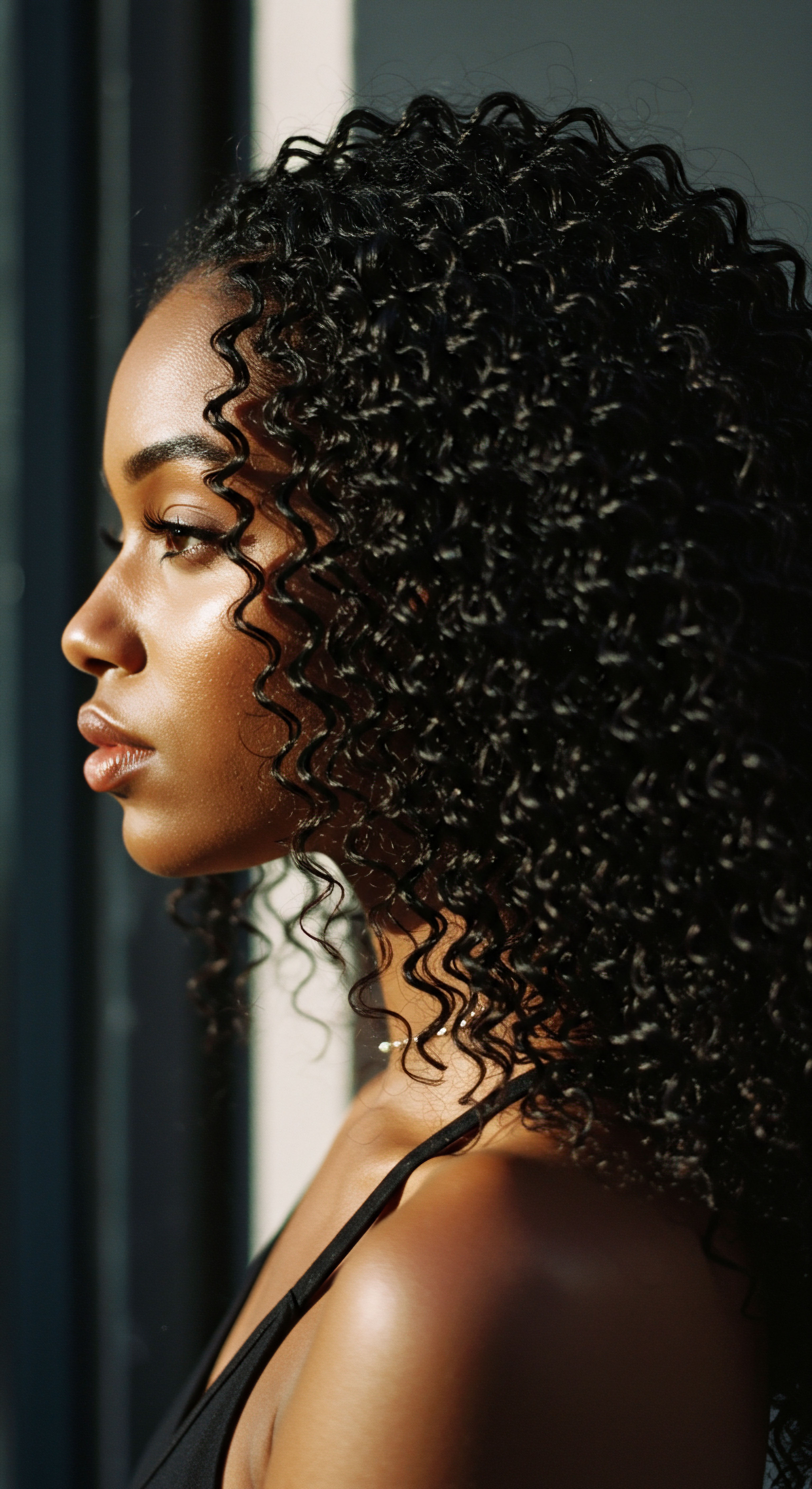
Relay
The story of Black hair, though rooted in ancient practices and shaped by centuries of oppression, does not conclude with conformity. It is a dynamic, living narrative, constantly adapting and asserting itself in the face of persistent societal pressures. To truly appreciate how Black hair symbolism continues to unfold, one must examine the powerful shifts that began in the mid-20th century and persist today, movements that redefined beauty, challenged systemic biases, and celebrated authentic identity with renewed vigor. This era marked a profound reawakening, a collective declaration that self-acceptance is a powerful form of protest.
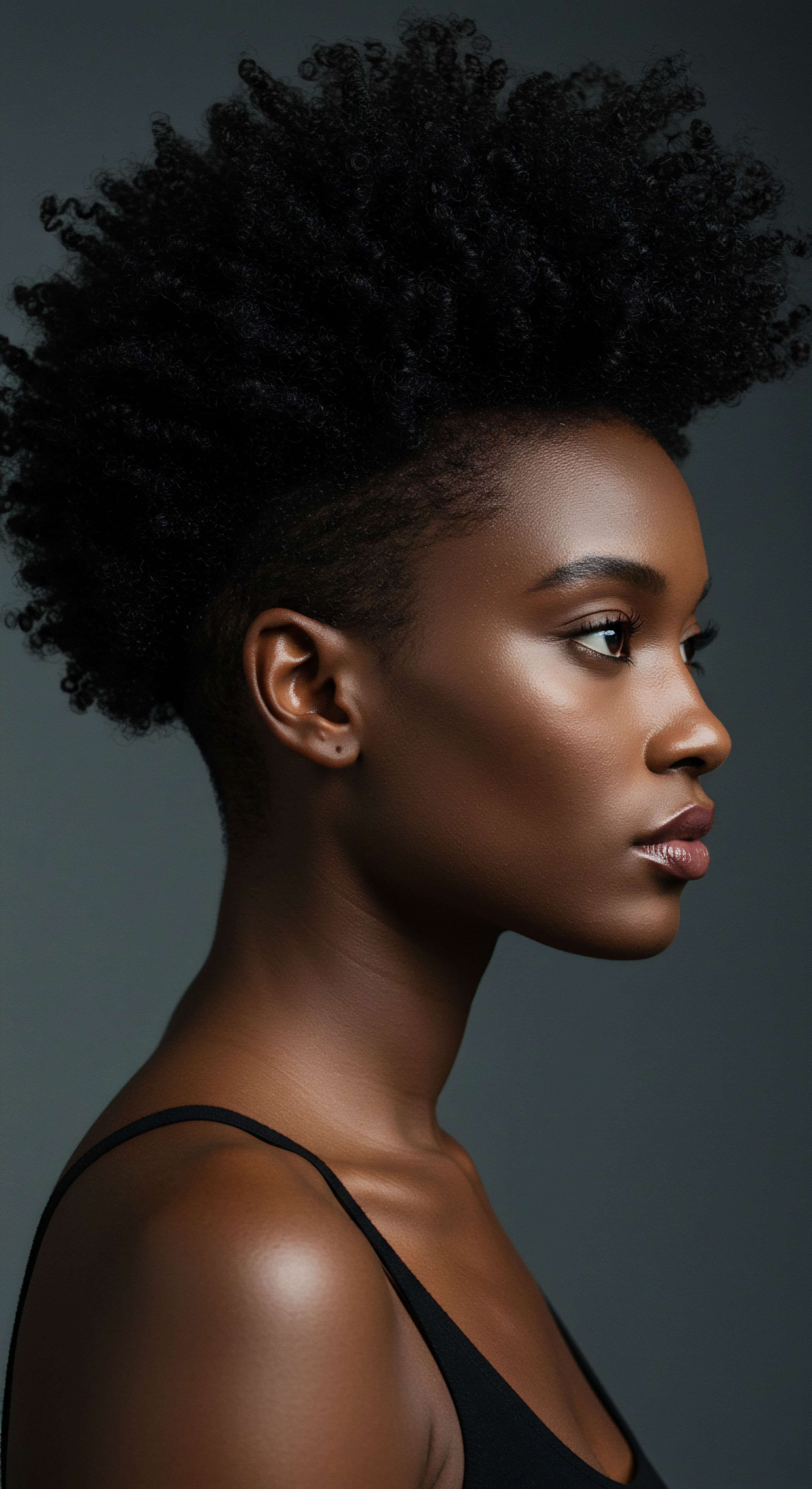
The Resurgence of Natural Forms
The Civil Rights Movement and the Black Power Movement of the 1960s and 1970s served as a pivotal moment in the evolution of Black hair symbolism. The Afro, a voluminous natural style, became a potent symbol of racial pride, self-acceptance, and a direct challenge to Eurocentric beauty standards. This was a deliberate rejection of forced assimilation, a visual affirmation of “Black is Beautiful.” Icons like Angela Davis and Nina Simone wore their Afros as political statements, symbolizing the enduring fight against racism and a reclamation of African identity.
This period witnessed a collective turning point where many Black individuals actively chose to cease chemical straightening, embracing their hair’s natural texture as a statement of cultural and political solidarity. The act of wearing one’s hair in its unaltered state became a counter-hegemonic movement, a declaration that Black hair, in all its diverse forms, was inherently good and worthy of celebration.

How Did Societal Bias Against Textured Hair Persist?
Despite the cultural shift of the 1960s and the growing natural hair movement, systemic biases against textured hair continued to affect Black individuals in various spheres, particularly in professional and educational settings. The perception that natural Black hairstyles are “unprofessional,” “messy,” or “distracting” has lingered, leading to documented instances of discrimination.
A significant study conducted by the Perception Institute in 2016, titled the “Good Hair” Study, revealed compelling data on this persistent bias. The study found that a majority of participants, regardless of race, exhibited an implicit bias against Black women’s textured hair. More specifically, the research indicated that White Women, on Average, Displayed Explicit Bias toward Black Women’s Textured Hair, Rating It as Less Beautiful, Less Sexy or Attractive, and Less Professional Than Smooth Hair. This finding underscores a deep-seated, often unconscious, societal conditioning that devalues natural Black hair, impacting perceptions of competence and professionalism.
The journey of Black hair symbolism is a testament to constant redefinition and unwavering self-affirmation.
Such biases are not merely theoretical; they translate into tangible barriers. Black women are 2.5 times more likely to have their hair perceived as unprofessional, and 54% more likely to feel the need to straighten their hair for a job interview to be successful. These experiences contribute to psychological distress, including anxiety, hypervigilance about how others perceive their hair, and a diminished sense of belonging in academic or professional spaces. The emotional toll of constantly navigating these biased perceptions is substantial, forcing many to choose between authentic self-expression and career advancement.
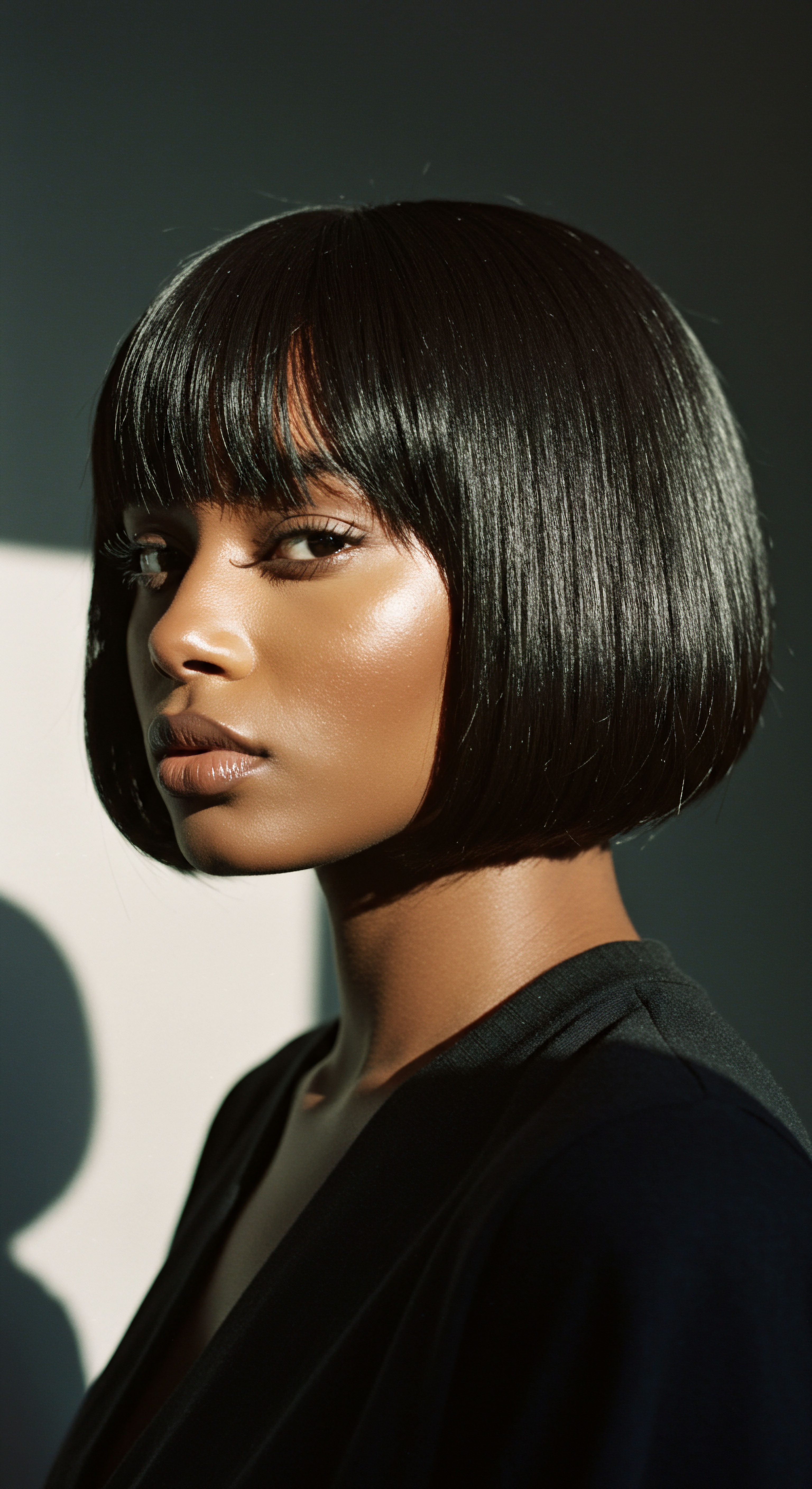
What Are the Modern Responses to Hair Discrimination?
In response to ongoing hair discrimination, legislative efforts have gained momentum. The CROWN Act, standing for “Creating a Respectful and Open World for Natural Hair,” is a legislative initiative designed to prohibit discrimination based on hair texture and protective hairstyles, such as braids, locs, twists, and knots, in workplaces and public schools. First introduced and passed in California in 2019, the CROWN Act movement has spread, with numerous states adopting similar legislation.
This legal action represents a critical step toward ensuring dignity and respect for cultural expression. It acknowledges that hair discrimination is a form of racial injustice that has deep historical roots and continues to affect the educational and employment opportunities of Black individuals. The passage of these laws aims to create environments where Black individuals can wear their natural hair without fear of negative repercussions, thereby fostering greater inclusivity and celebrating diverse beauty standards.
| Area of Impact Professional Perception |
| Description of Effect Hair perceived as less professional, leading to bias. |
| Associated Research Finding Black women's hair 2.5 times more likely to be perceived as unprofessional. |
| Area of Impact Employment Opportunities |
| Description of Effect Denied interviews or jobs due to natural hair. |
| Associated Research Finding 25% of Black women believe they have been denied a job interview due to hair. |
| Area of Impact Conformity Pressure |
| Description of Effect Feeling compelled to alter natural hair for work. |
| Associated Research Finding 54% of Black women feel they need to straighten hair for job interviews. |
| Area of Impact Mental Wellbeing |
| Description of Effect Increased stress, anxiety, and negative self-image. |
| Associated Research Finding Hair discrimination impacts mental health, contributing to anxiety and chronic stress. |
| Area of Impact Hair discrimination imposes significant professional and psychological burdens, highlighting the continued relevance of policies like the CROWN Act. |
The ongoing dialogue around hair symbolism today is a testament to its enduring power. It speaks to the personal choice of how one presents oneself to the world, deeply intertwined with historical memory, cultural pride, and the ongoing fight for equity. Each coil, kink, and curl tells a story of survival, creativity, and an unyielding spirit.

Reflection
The journey of Black hair symbolism is a profound testament to resilience and dynamic adaptation. From its origins as a rich communicator of social standing and spiritual connection in ancient African societies, through the deliberate attempts at erasure during slavery, to its re-emergence as a powerful emblem of identity and resistance in modern times, hair has remained an enduring canvas for self-expression. It stands as a living chronicle, each strand holding echoes of history, a silent yet potent declaration of belonging and an ongoing aspiration for authentic acceptance. The path continues, a vibrant affirmation of heritage, creativity, and the right to simply exist in one’s natural form.

References
- Awad, G. H. Norwood, M. Chapman, G. L. et al. “The “Good Hair” Study ❉ Explicit and Implicit Attitudes Toward Black Women’s Hair.” Perception Institute, 2016.
- Banks, Ingrid. Hair Matters ❉ Beauty, Power, and Black Women’s Consciousness. New York University Press, 2000.
- Byrd, Ayana, and Lori Tharps. Hair Story ❉ Untangling the Roots of Black Hair in America. St. Martin’s Press, 2001.
- Chang, C. J. et al. “Use of Straighteners and Other Hair Products and Incident Uterine Cancer.” Journal of the National Cancer Institute, 2022.
- Johnson, A. and Bankhead, T. “Hair and Identity ❉ African American Women’s Experiences with Hair.” Journal of Black Studies, 2014.
- Mercer, Kobena. “Black Hair/Style Politics.” Welcome to the Jungle ❉ New Positions in Black Cultural Studies. Routledge, 1994.
- Patton, Tracey. “African American Hair as an Expression of Identity.” The Journal of Pan African Studies, 2006.
- Perception Institute. “The ‘Good Hair’ Study Results.” Perception Institute, 2016.
- Thompson, Cheryl. “Black Women and Identity ❉ A Reading of Black Hair.” Women & Performance ❉ A Journal of Feminist Theory, 2008.
- Walker, Alice. “In Search of Our Mothers’ Gardens ❉ Womanist Prose.” Harcourt Brace Jovanovich, 1983.